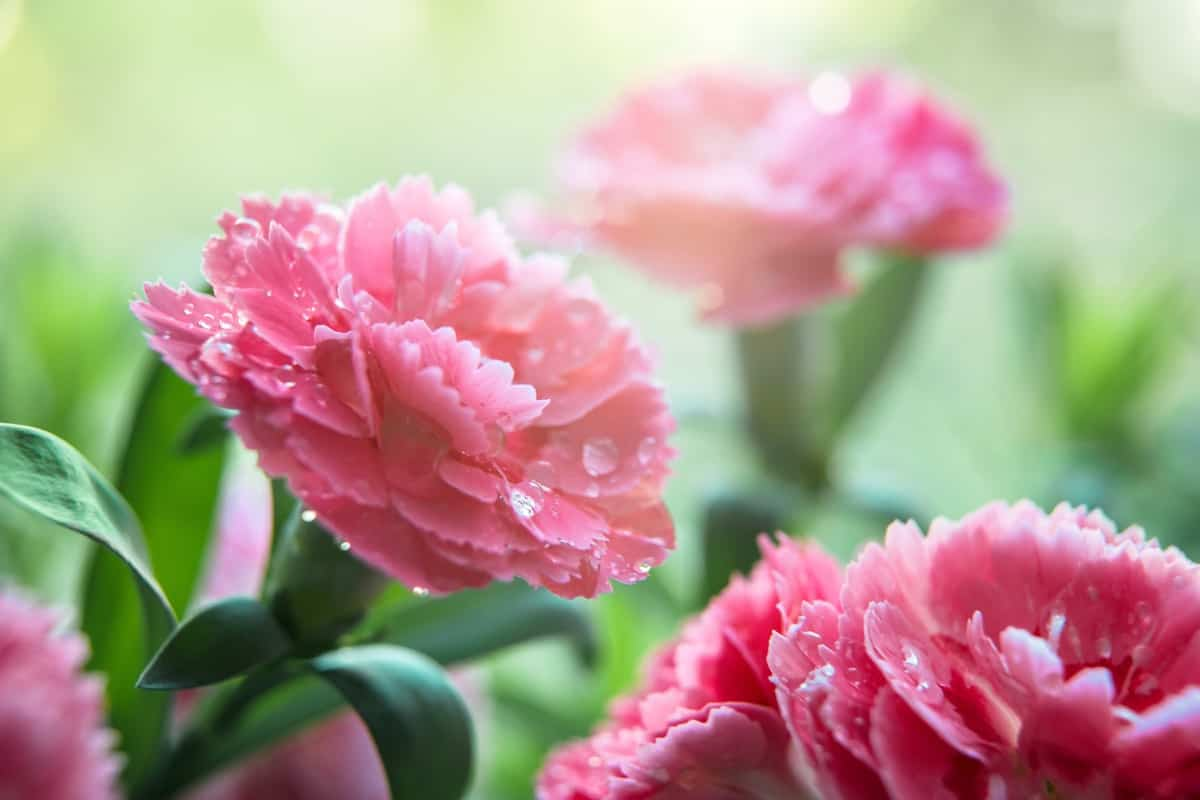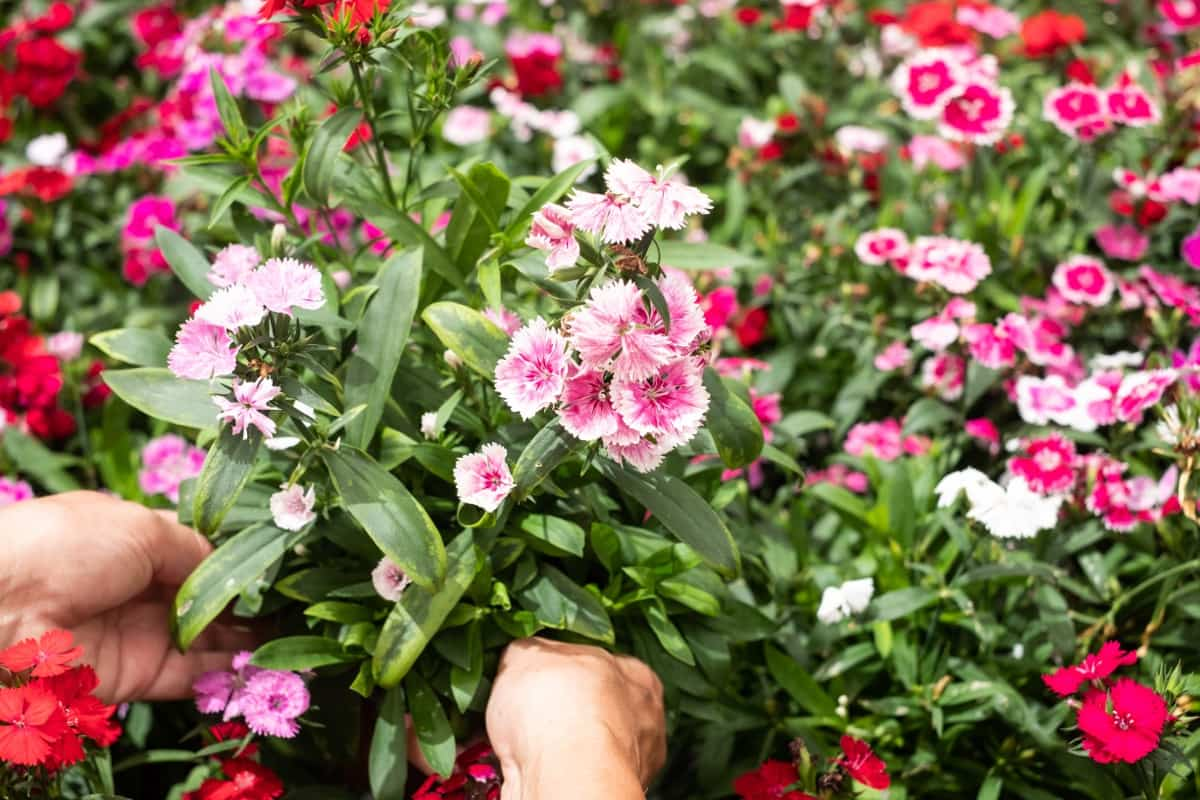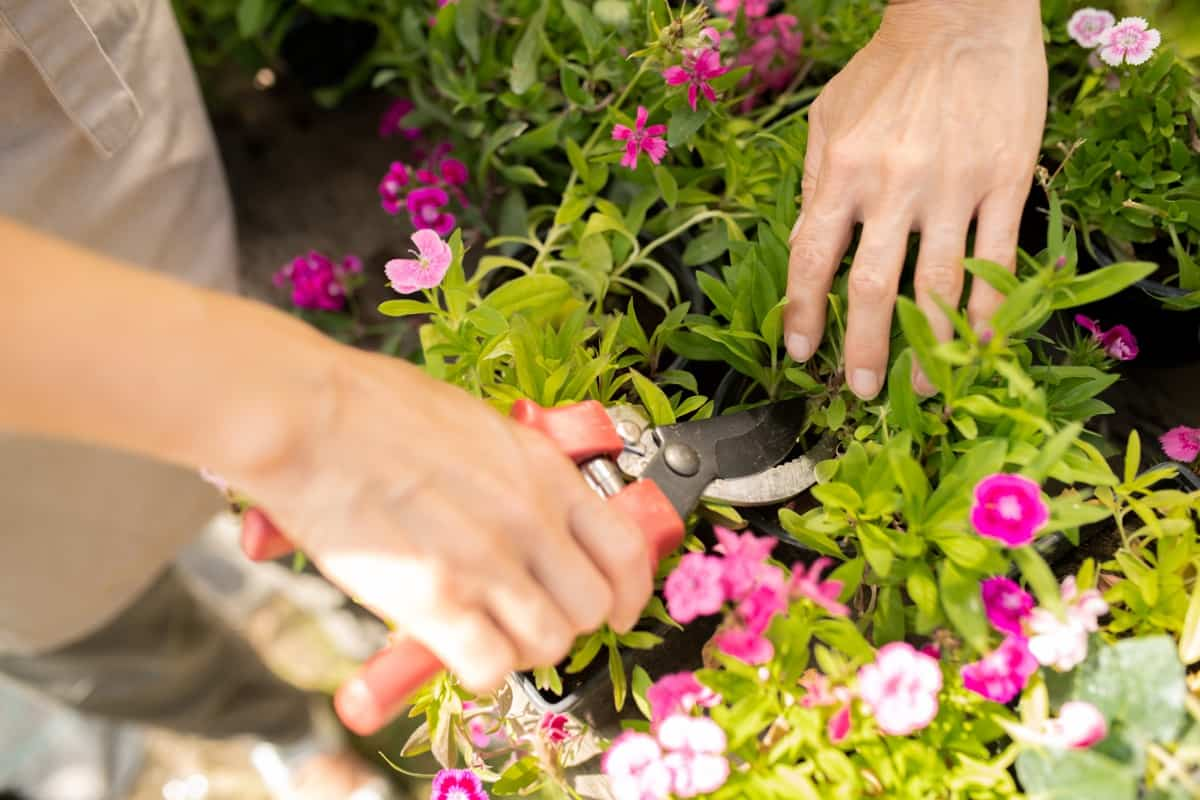Welcome to our blog post on Common Carnation Plant Pests! Carnations, with their magnificent blooms and diverse varieties, are beautiful additions to gardens, but like any plant, they are prone to a range of common pests that can hinder their beauty and health. This blog post aims to discuss 10 of the most common carnation pests, including their symptoms, treatments, prevention, and management. So, let’s find out the carnation plants’ ten most common pests.

Important Points for Beginners to Identify and Manage Pests in Carnation Plants
- Identifying the Pest: The first step is identifying the pest infesting your carnation plant so that you can approach it with the most effective control method.
- Regular Monitoring: Monitor your carnation plants regularly for signs of pests. This will help you to identify an infestation early when it is easier to control.
- Sanitation: Remove the infected plant debris and burn them.
- Natural Control: Several natural control methods can help to manage pests. These include plant extracts, essential oils, predators, and organic insecticides.
- Chemical Control: If natural controls are ineffective, use insecticides as a last resort, and follow the label instructions and dosage carefully.
Common Carnation Plant Damaging Pests
Aphid Pest in Carnation Plant
Damage Symptoms by Aphis gossypii and Myzus persicae: Aphids feed on the plant’s sap and inject toxic saliva, giving a puckered or deformed appearance to leaves, stems, and flowers. Infested leaves exhibit wilting, curling, and chlorosis. Aphids excrete sugary honeydew due to their feeding, promoting the growth of black sooty mold.
Favorable Conditions: Aphids prefer moderate temperatures and high humidity of 20-25°C and >60% humidity for survival and reproduction. They prefer plants with tender, succulent growth, such as young carnation shoots and newly emerged leaves, as they provide a nutrient-rich sap. Excessive use of nitrogen-rich fertilizers can promote aphid infestations.
Treatment, Maintenance, and Control Measures: Spray bifenthrin, cypermethrin, deltamethrin, malathion, chlorpyrifos, imidacloprid, thiamethoxam, pyriproxyfen, methoxyfenozide, and acetamiprid. Release natural predators like ladybugs, lacewings, and parasitic wasps.
Thrips Pest in Carnation Plant
Damage Symptoms by Thrips tabaci: Thrips suck the sap and excrete honeydew from the upper surface of carnation leaves and cause a stippled, mottled, or speckled appearance called silvering or whitening. The affected plants show curling in leaves, scarring on petals, and deformed flowers.
Favorable Conditions: Thrips prefer warm and mildly humid environments of 20-30°C and 60-80% humidity for survival and reproduction. Dense canopy and poor airflow provide hiding places and shelter for thrips attracted to tender plant tissues and flowers with pollen and nectar.
Treatment, Maintenance, and Control Measures: Spray imidacloprid, acetamiprid, thiamethoxam, acephate, malathion, chlorpyrifos, dimethoate, bifenthrin, cypermethrin, deltamethrin, spinosad, buprofezin, and pyriproxyfen.
Carnation Tortrix Moth Pest in Carnation Plant
Damage Symptoms by Tortrix pronubata: The moth’s larvae feed on the leaves of carnation plants and habitually roll the leaves to create shelters. Infected plants show webbing, leaf rolling, stunted growth, scarring on petals, and reduced flower quality.
Favorable Conditions: Moths prefer moderate temperatures and humid climates of 18-25°C for egg survival and to prevent desiccation of larvae and pupae. They prefer areas with sheltered environments for feeding and protection, such as rolled or folded leaves.
Treatment, Maintenance, and Control Measures: Spray carbaryl, dicofol, spinosad, methoxyfenozide, and tebufenozide. Spray Bt-based insecticides, such as Bacillus thuringiensis var. kurstaki (Btk), to kill the larvae.
Leaf Miner Pest in Carnation Plant
Damage Symptoms by Liriomyza trifolii: Leaf miners create distinct serpentine mines or tunnels within the leaves. These mines appear as winding, whitish or translucent lines. The affected leaves show stippled or blotchy appearance, chlorosis, deformation, stunted growth, and premature leaf drop.
Favorable Conditions: Leaf miners prefer warm 25-30°C temperatures and high humidity of >70%. They prefer plants in the vegetative growth stage. Plant stresses and nutrient deficiencies provide an ideal environment for leaf miners to feed and reproduce.
Treatment, Maintenance, and Control Measures: Spray bifenthrin, cypermethrin, deltamethrin, malathion, spinetoram, spinosad, abamectin, imidacloprid, acetamiprid, and thiamethoxam. Release Encarsia formosa, a tiny parasitic wasp, to control the pest.
Red Spider Mite Pest in Carnation Plant
Damage Symptoms by Tetranychus urticae and Tetranychus cinnabarinus: Red spider mites feed on the plant’s tissue by piercing the cells and extracting sap, causing yellow or bronze spots known as stippling. The affected leaves show chlorosis, webbing, curling, distortion, and premature leaf drop.
Favorable Conditions: Red Spider Mites prefer warm and dry conditions of 20-30°C and <60% humidity for survival and reproduction. Overcrowding of plants and poor air circulation provides a conducive environment for the mites.
Treatment, Maintenance, and Control Measures: Spray wettable sulfur, dicofol, abamectin, bifenthrin, bifenazate, spiromesifen, fenpropathrin, hexythiazox, imidacloprid, acephate, etoxazole, clofentezine, spirodiclofen, and cyflumetofen.
In case you missed it: 10 Common Gerbera Plant Damaging Diseases: Symptoms, Treatment, Prevention, and Management

Carnation Fly Pest in Carnation Plant
Damage Symptoms by Hylemya briennescens: The larvae are the most damaging stage. They feed on the plant’s roots and lower stem and destroy the root system. The affected plants show root galls, leaf chlorosis, curling, wilting, reduced flowering, and stunted growth.
Favorable Conditions: The larvae prefer warm temperatures and moist soils of 20-25°C for egg hatching and larval growth. Organic matter, such as decaying plant material or manure, in the soil provides a conducive environment for pests.
Treatment, Maintenance, and Control Measures: Spray bifenthrin, cypermethrin, deltamethrin, imidacloprid, acetamiprid, malathion, carbaryl, diazinon, chlorpyrifos, spinosad, phorate, methoprene, and pyriproxyfen.
Bud Borer Pest in Carnation Plant
Damage Symptoms by Helicoverpa armigera: Caterpillars bore into the buds and feed on the developing flower tissue. They tunnel into the petals, causing wilting, brown, necrotic spots. They produce dark-colored droppings, known as frass. Infested buds show wilting, discoloration, and distortion.
Favorable Conditions: Caterpillars prefer warm and moist environments of 20-30°C for reproduction and survival. Dense plantings, weeds, and leafy vegetation create a microclimate that favors pest development.
Treatment, Maintenance, and Control Measures: Spray spinosad, bifenthrin, cypermethrin, deltamethrin, chlorpyrifos, malathion, imidacloprid, and acetamiprid. Spray Bt-based biopesticides, Bacillus thuringiensis var. kurstaki, to kill the caterpillars.
Whitefly Pest in Carnation Plant
Damage Symptoms by Trialeurodes vaporariorum and Bemisia tabaci: Whiteflies extract sap from the leaves and excrete sticky honeydew that promotes sooty mold. Infested leaves exhibit chlorosis, wilting, curling, and premature leaf drop.
Favorable Conditions: Whiteflies prefer warm and humid environments of 20-30°C and >50% humidity for their growth and survival. High plant density, weeds, and poor airflow provide a conducive environment for the pest.
Treatment, Maintenance, and Control Measures: Spray bifenthrin, cypermethrin, deltamethrin, imidacloprid, acetamiprid, thiamethoxam, dinotefuran, clothianidin malathion, chlorpyrifos, buprofezin, and pyriproxyfen.
Mealybug Pest in Carnation Plant
Damage Symptoms by Phenacoccus solenopsis: Mealybugs covered in a cotton white powdery wax that serves as protection is the characteristic symptom. The presence of these cottony masses is a key indicator of mealybug activity. They feed on the sap and excrete honeydew. Infected leaves show chlorosis, wilting, distorted, and premature leaf drop.
Favorable Conditions: Mealybugs prefer warm and humid environments of 20-30°C and >60% humidity for reproduction and survival. High plant density, plant stress, and poor airflow create a conducive environment for the pest.
Treatment, Maintenance, and Control Measures: Spray imidacloprid, thiamethoxam, acetamiprid, malathion, chlorpyrifos, bifenthrin, cypermethrin, permethrin, pyriproxyfen, spirotetramat, or dinotefuran.
Root Knot Nematode Pest in Carnation Plant
Damage Symptoms by Meloidogyne spp: The characteristic symptom of root-knot nematode infestation is the formation of root galls. The nematodes penetrate the roots and induce the formation of feeding sites, leading to root necrosis, and reduced root volume. Infected plants show wilting, chlorosis, stunted growth, and reduced flower production.
Favorable Conditions: Root-knot nematodes prefer warm and humid soils of 20-30°C for feeding, reproduction, and survival. They prefer soils with ample organic matter, nutrient availability, and slightly acidic to neutral soil of pH 5.5 to 7. Waterlogged conditions create a conducive environment for the pest.
Treatment, Maintenance, and Control Measures: Spray fenamiphos, oxamyl, aldicarb, methyl bromide, and chloropicrin. Apply biopesticides like Bacillus spp and Paecilomyces lilacinus.
In case you missed it: 10 Common Gerbera Plant Damaging Pests: Symptoms, Treatment, Prevention, and Management

Conclusion
Common carnation plant pests include aphids, thrips, tortrix moths, leaf miners, red spider mites, flies, borers, whiteflies, mealybugs, and nematodes. By identifying the pest, inspecting plants regularly, and using natural control methods, you can help to keep your carnation plants healthy and beautiful.
- Beneficial Insects in Pest Management
- Natural Solutions for Pest Control in Flower Gardens
- Types of Fungicides Used in Agriculture
- Common Issues in the Fruit Development Stage of Pomegranate Farming
- Fruit Development Issues in Papaya: Easy Solutions and Treatment
- Soil-Borne Diseases and How to Protect Your Plants
- Practices to Prevent Disease Spread in the Garden
- From Wilted to Thriving: How to Treat Root Rot Naturally in Houseplants
- Natural Remedies to Cure Brown Spots on Fig Tree Leaves